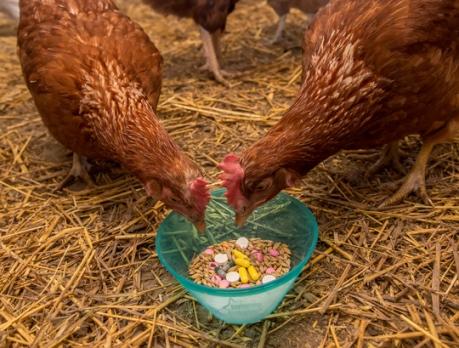A report today from the US Food and Drug Administration (FDA) shows that sales and distribution of all antimicrobial drugs approved for use in food-producing animals rose by 1% from 2014 to 2015, continuing an upward trend.
While the 1% increase ties for the lowest annual increase since 2009, the FDA report, which includes several years of domestic sales and distribution data, shows that sales and distribution of all antimicrobial drugs approved for use in meat and poultry increased by 24% from 2009 through 2015. More significantly, sales and distribution of medically important antibiotics for use in food animals increased by 26% from 2009 through 2015, including a 2% increase from 2014 to 2015.
Overall, medically important antibiotics accounted for 62% of all antibiotics sold for use in food-producing animals in 2015. Approximately 70% of all medically important antibiotics in the United States are sold for use in animals.
Among the antibiotics that are considered medically important in human medicine, lincomasides saw the greatest percentage increase in domestic sales over the 6-year period, rising 96% from 2009 to 2015. That includes a 22% decrease in sales from 2014 to 2015.
Tetracyclines, which represent the largest volume of sales, increased by 31% from 2009 through 2015 and by 4% from 2014 through 2015. Aminoglycoside sales volume showed the greatest percentage increase from 2014 through 2015, rising 13%. And cephalosporins, which represent only a fraction of total sales, rose by 61%.
'Every year it goes up'
Experts say the continued rise in the use of medically important antibiotics in food-producing animals is a concern.
"Every year I expect sales of medically important antibiotics to go down, since the industry keeps saying they are using less and only when justified," public health and animal medicine consultant Gail Hansen, DVM, told CIDRAP News. "But every year it goes up."
Hansen noted, however, that since the number of animals raised in the United States went up in 2015, it's possible that sales per animal are steady compared with 2014.
"The news is not good," David Wallinga, MD, senior health officer with the Natural Resources Defense Council (NRDC), wrote in a blog post. "Against the backdrop of a crisis in now untreatable or nearly untreatable infections, this report further underscores how urgently we need more and stronger government action to address the ongoing overuse of the drugs in livestock."
Under the Animal Drug User Fee Amendments of 2008, antimicrobial drug sponsors are required to report to the FDA on annually the amount of antibiotics they sell or distribute for use in food-producing animals. But the FDA cautions that this information does not necessarily represent actual use of products, since not all purchased antibiotics are used.
Critics say better data are needed to create a more comprehensive picture of antibiotic use in food-producing animals and how it relates to antibiotic resistance.
Under FDA Guidance for Industry #213, drug sponsors are being asked to voluntarily remove growth promotion from the labels of all medically important antibiotics used in food animals starting in 2017. In addition, use of the drugs will require veterinary oversight. The FDA is hopeful this new policy will reduce the use of medically important antibiotics on farms.
But some say ending the use of antibiotics for growth promotion isn't enough. In September 2013, the NRDC and six other groups petitioned the FDA to withdraw approval of the use of medically important antibiotics in livestock and poultry for disease prevention, as well.
See also:
Dec 22 FDA summary report
Dec 22 FDA news release on the report
Dec 22 NRDC blog post
























